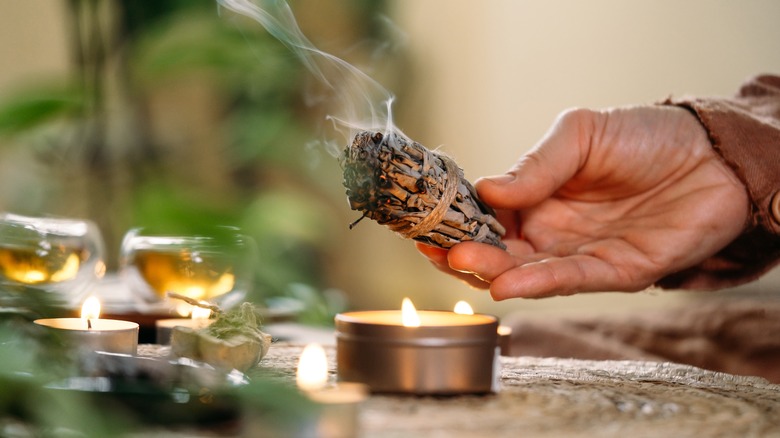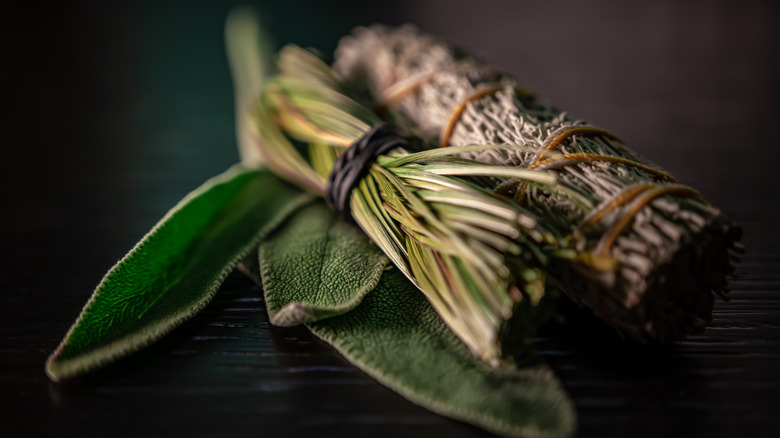Camping
Lexi Kassler
Citronella is probably the most well-known and effective natural mosquito repellant on the market and yet it’s not all that common of a household item. So if you have a surprise visit from some mosquitoes and you don’t have any citronella candles lying around from last summer, you might be out of luck. But don’t make an emergency trip to the hardware store just yet! You might be surprised to learn that you might already have some natural repellants sitting in your kitchen cupboards.
In the past, we’ve covered how this common baking staple and your favorite alcoholic beverage can repel those annoying pests that find you around the campfire or while sitting in your backyard. If you don’t keep any of these around you might try looking around in your spices for a bottle of sage leaves instead. Sage not only smell wonderful on their own but when bundled up tight and lit can produce a wonderful smoky aroma that you will love and the mosquitoes will hate.
Negative energy and bad bugs — sage can repel it all

Nina Lishchuk/Shutterstock
Yup, you read that right. Burning sage isn’t just for keeping away negative energy, it repels those pesky bugs, too. However, let’s clear something up first: though the ritual of burning sage — also called smudging — has become very popular in recent years, what we’re recommending as a bug repellent is very different.
Smudging is the act of wafting smoke around a room using a bundle of herbs — most commonly white sage and palo santo — and other organic materials to catch the ashes and fan the smoke around. This ritual has been used among many cultures over the millennia but is most commonly associated with Native Americans. As smudging has increased in popularity, this has raised some concerns about the conservation of palo santo and, white sage which are declining in population due to over-harvesting, improper harvesting methods, and the impacts of climate change.
So, if you want to burn sage just to repel insects, we recommend that you just use the regular sage found at your grocery store or at your local nursery if you want to grow it at home. It will have the exact same effect in keeping away mosquitoes. If sage grows somewhere near your home, be sure that it is sage before you go burning the stuff. If it is, don’t pull up the entire bush and just take a few leaves.
How to safely burn sage to repel mosquitoes

Gregory Allen Brown/Shutterstock
Burning sage is a great natural alternative to chemical bug repellants or citronella and can also make your backyard or campground smell great without offending your neighbors. In fact, if you’re not careful, they may wander over thinking you’re cooking up some yummy food!
To safely burn sage outside, you can simply throw it in your fire pit to release the fragrance. Place it toward the edge of the fire so it burns slower. Just make sure to always keep an eye on your fire when it’s burning, especially during the summer when it’s dry out. Fresh herbs may throw off a few sparks as the water burns off.
If you don’t or can’t use a firepit where you live, you can use any kind of ceramic dish or bowl (preferably one you don’t care too much about) that’s big enough to safely hold a pile of burning herbs. It you have some twine or cotton string, wrap up the herbs in a tight bundle to help them burn slower and release the smoke longer. Place the dish away from anything flammable and avoid areas where it will blow into your face which could be uncomfortable.
If you don’t have a ton of sage on hand, you can also use herbs like rosemary, lavender, and mint. Not only do these herbs work to repel mosquitoes but they also smell amazing.

